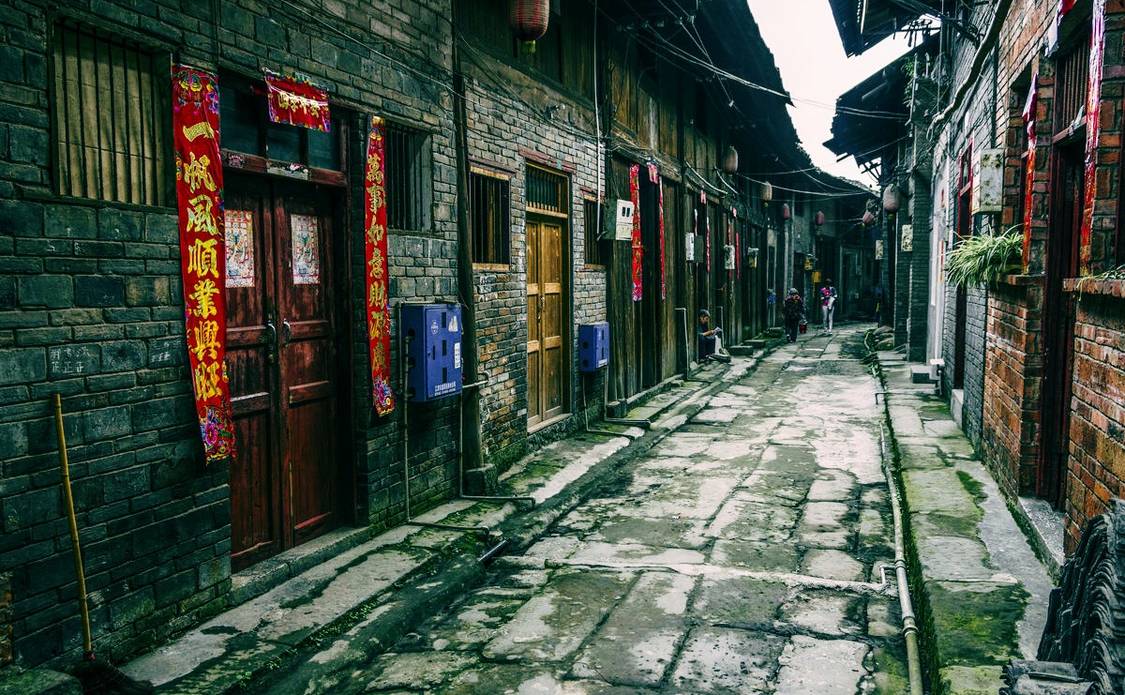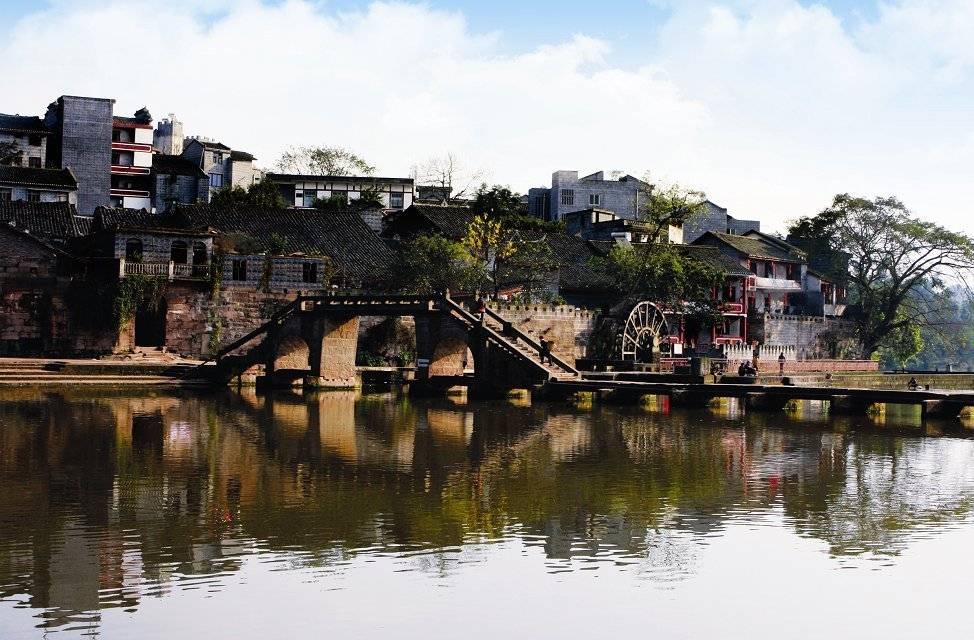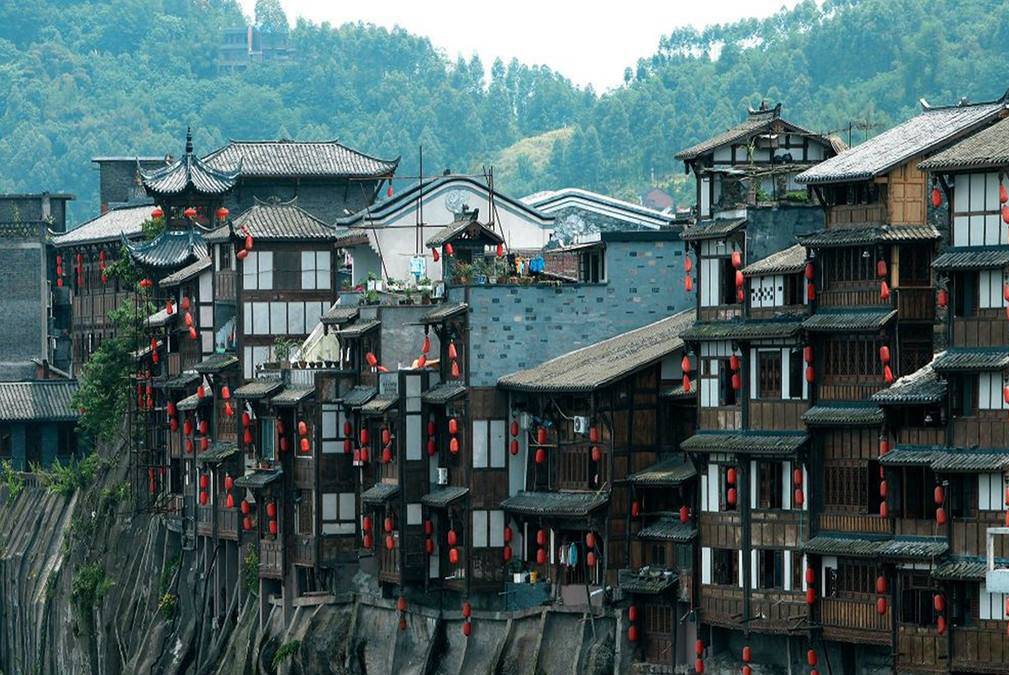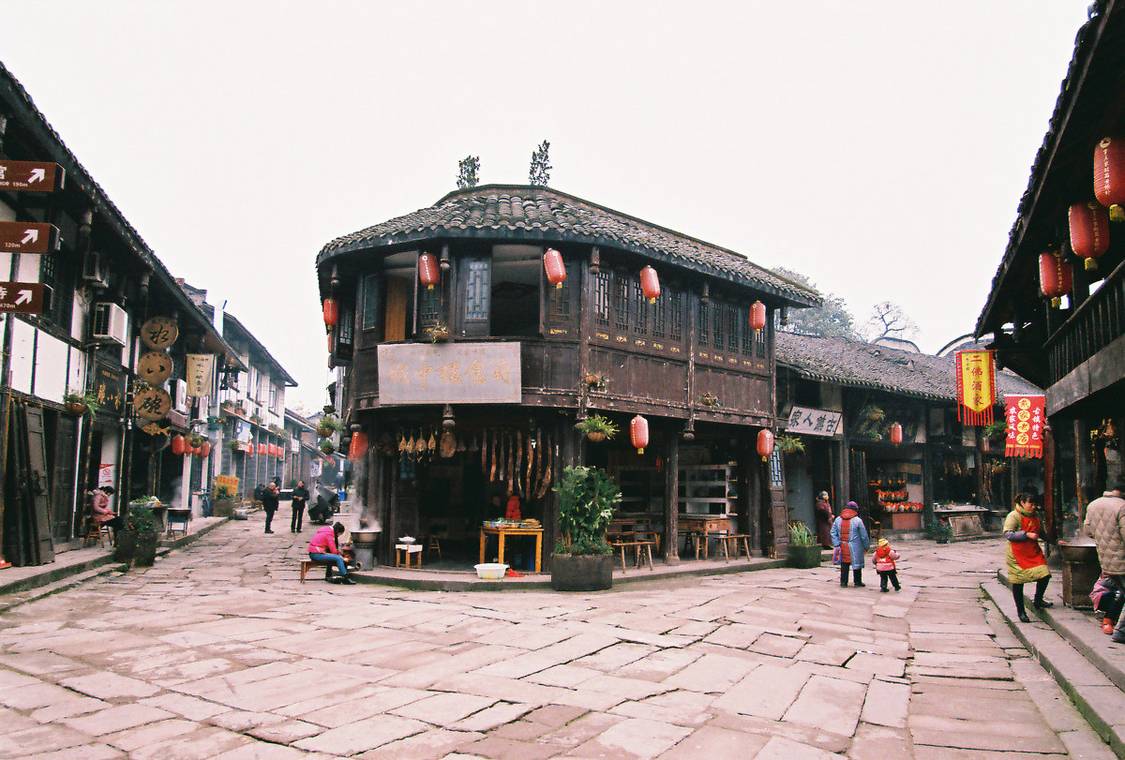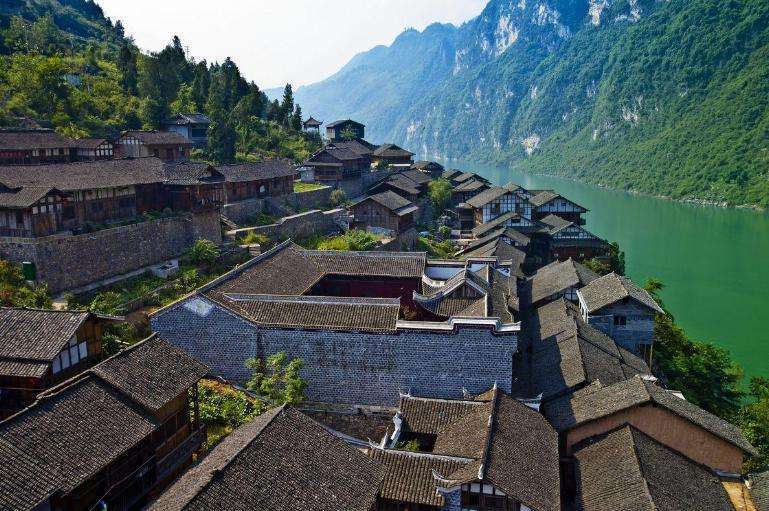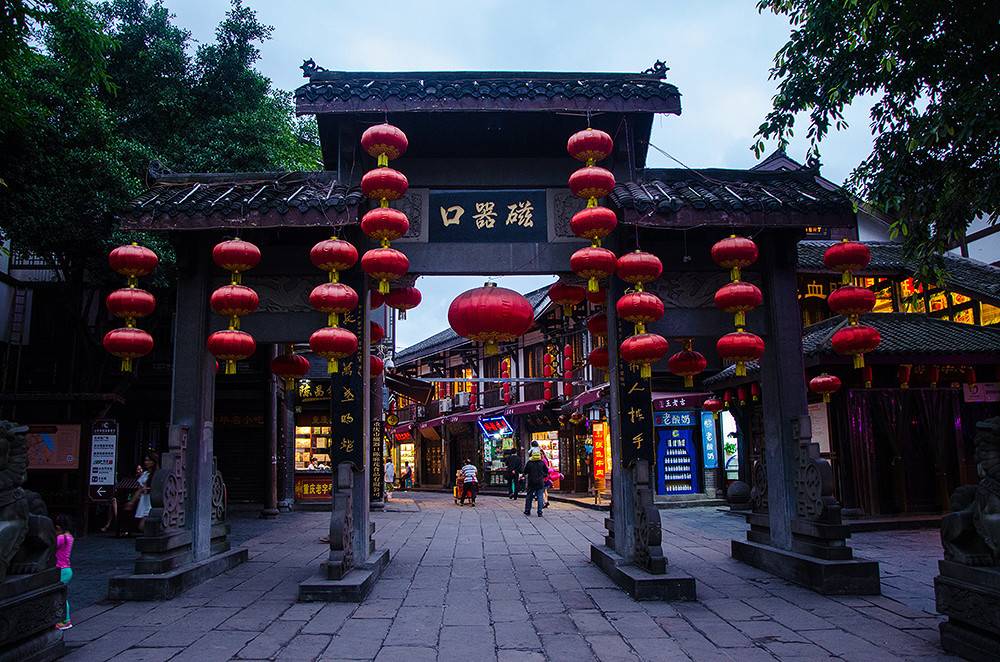Baisha Ancient Town: A Cultural Hub in Eastern Sichuan
Features: Han tombs, Baisha Film and Television Base. Baisha Ancient Town faces the Yangtze River to the north and is backed by mountains to the south. It retains many traditional residences from the late Qing Dynasty and early Republic of China, as well as some temples and Western-style buildings. The bluestone roads are winding and intricate, with hidden gems in the deep alleys. Special foods: Chrysanthemum hotpot, rock sugar lotus root balls, mung bean cakes, Baisha distilled liquor.
Wanling Ancient Town: China's First Immigrant Water Town
Features: The market street is built along the mountain, layer upon layer, and is known as the 'Little Mountain City'. It is one of the first historical and cultural towns named by Chongqing Municipality. Despite the vicissitudes of a thousand years, the ancient town still retains its unique style. Song Dynasty Thousand Buddha Grottoes, Eastern Han Dynasty Rock Tombs, Ming and Qing Dynasty ancient bridges and temples, martyrs' former residences, four village gates, old docks, immigrant culture, teahouse culture, and the eighteen steps of the ancient stone path. Specialty foods: Pugai noodles, Qingjiang fermented bean fish, Rongchang braised goose, lard bubble cake, and fried Sichuan fish.
Anju Ancient Town: Serene Scenery and Picturesque Views
Features: The 'Eight Sceneries of Anju' and 'Nine Palaces and Eighteen Temples' are renowned far and wide. Anju Ancient Town is nestled by mountains and rivers, boasting not only well-arranged ancient town architecture and historical relics but also beautiful natural landscapes and traditional customs (dragon boat racing, folk paper crafts). Specialty foods: Jinsha mutton, boat nail fish.
Laitan Ancient Town: The Riverside Ancient Town Through the Ages
Features: Wengcheng, Laitan Eight Sceneries, Ancient Temple Complex, Southern Song Dynasty Stone Carvings at Erfo Temple. The ancient town is located by the Qujiang River, offering beautiful natural scenery. The Ming and Qing dynasty residences are staggered in height, and the old streets and alleys are simple and elegant. The Wengcheng, built during the Qing Dynasty, is well-preserved and unique to Chongqing. Special foods: Qujiang fish, local chicken, and you can also try the local rice wine.
Longtan Ancient Town: Time-traveling Stone-paved Streets
Features: The ancient buildings in the town are distributed in a long shape from south to north along the river, with many residential foundations built with finely chiseled stone strips. Famous ancient buildings include the Yu Wang Palace and the Wanshou Palace. The most famous ones are the former residence of Zhao Shiyan, the Youyang Middle School (Longtan Middle School) described by Ding Ling, and the old residence of his friend 'Meng Ke' (Wang Jianhong). Specialties: Xiushan yellow flowers, pine flower preserved eggs, etc.
Ciqikou Ancient Town: One River, Two Streams, Three Mountains, Four Streets
Features: The ancient town of Ciqikou has 12 streets and alleys, most of which are lined with Ming and Qing style buildings, with stone-paved roads and numerous shops along the streets. The town is famous for its three treasures (Mao Xue Wang, Hui Qian Zhang Pi, and Pepper Salt Peanuts, also known as the three treasures or three wonders of the ancient town) and its three abundances (many temples, many footprints of famous people, and many teahouses, such as Baolun Temple and Yunding Temple). The human touch of the past has filled Ciqikou with a sense of history. Today, Ciqikou stands quietly like a cultural chronicle, waiting for your arrival. Specialty foods: Mongolian lamb skewers, stinky tofu, Mao Xue Wang, crispy potatoes, Chen Ma Hua, Jiangjin rice flower candy, Hechuan peach slices, Zhang Duck's braised roast duck, etc.


